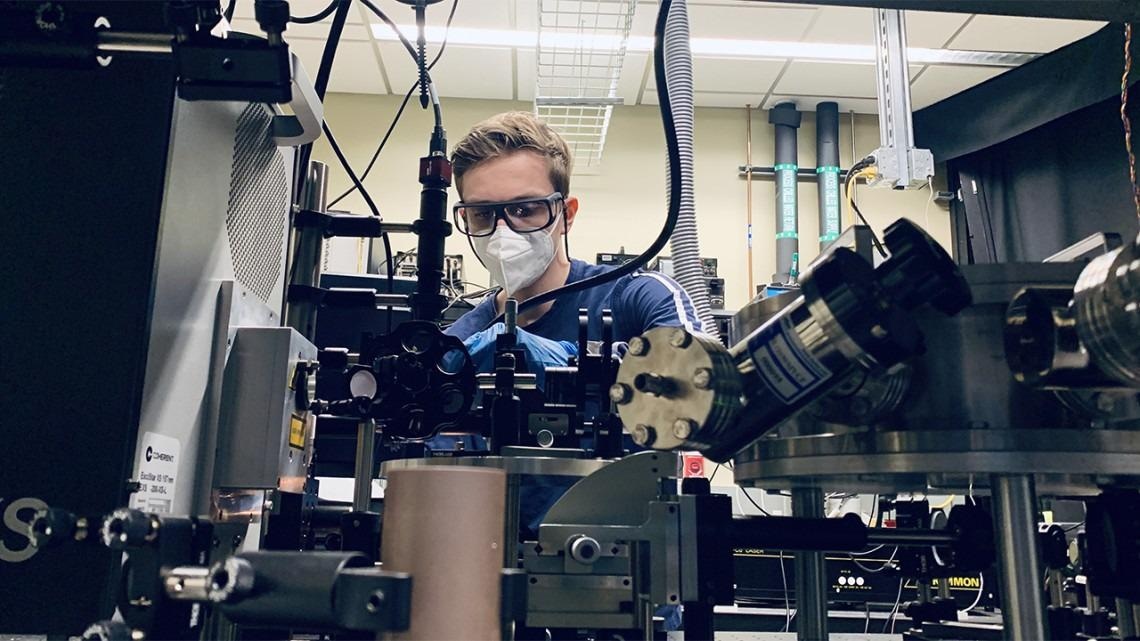In this article, we explore the fascinating world of lasers beyond what is visible to the naked eye. From infrared and ultraviolet laser applications to their potential uses in various industries, many possibilities can be explored with these powerful tools.
Well, look at how they work, why they’re so useful, and where you might find them in action. Along the way, well explain why this technology is becoming increasingly important for a wide range of activities and industries.
Get ready to take a journey into an unseen realm that could soon be revolutionizing our lives!
Introduction to Infrared and Ultraviolet Laser Technology
As technology continues to advance, newer applications of laser light are becoming increasingly relevant. Infrared and ultraviolet (IR/UV) lasers live at the forefront of these new technologies, offering unparalleled capabilities in a variety of fields. This article will explore the fundamentals behind infrared and ultraviolet laser technology, as well as their various applications across industries.
At its core, IR/UV laser technology is about manipulating light invisible to the human eye. The electromagnetic spectrum encompasses all forms of radiation from low-frequency radio waves to high-frequency gamma rays; visible light only accounts for a tiny portion of this spectrum.
By utilizing non-visible wavelengths such as infrared or ultraviolet, scientists can access an entirely different realm that offers unique possibilities for research and development. The power behind IR/UV lasers lies in their ability to precisely control energy levels with pinpoint accuracy – something traditional optics cannot provide – making them ideal for medical treatments involving soft tissue surgery or precision cutting tools used by industry professionals.
In addition, they are also being applied in areas like optical communications and data storage where extremely accurate information must be transmitted over long distances without distortion or loss due to atmospheric interference. The potential uses for infrared and ultraviolet lasers are vast with no signs of slowing down any time soon – from manufacturing processes requiring precise measurements right down to measuring sea level variations using satellites equipped with special sensors sensitive enough to detect minute changes in water height caused by climate change effects! Scientists have even adapted this technology into more everyday items like smartphones allowing users to take pictures through walls using thermal imaging cameras! There’s no doubt that further advances will continue pushing boundaries far beyond what we can currently imagine – so stay tuned!
Advantages and Limitations of Using Infrared and Ultraviolet Lasers

Infrared and ultraviolet lasers have become increasingly popular in a variety of applications. From medical treatments to military uses, these unique types of laser technology offer advantages and limitations that must be considered before implementation.
When it comes to infrared lasers, the main advantage is their ability to penetrate through dense materials such as clothing or fog. This makes them ideal for surveillance or search-and-rescue missions in challenging conditions where visibility is limited.
They can also be used for precision cutting and welding because they produce an intense beam of light capable of reaching high temperatures quickly without damaging the surrounding material. However, because infrared radiation does not reach beyond certain distances, this limits its range when compared with other technologies like radar or sonar.
Ultraviolet lasers are renowned for their accuracy due to their shorter wavelength which allows them to focus on smaller areas than visible light beams can achieve. They are often employed in microsurgery operations since they minimize damage while providing more precise control over tissue manipulation than traditional techniques allow for – making them ideal for delicate procedures like eye surgery or dental work. On the other hand, UV radiation cannot travel long distances so they tend not to be useful outside clinical settings as well as being expensive compared with some other forms of laser technology available today.
Safety Considerations for Working with Infrared and Ultraviolet Lasers
When working with infrared and ultraviolet lasers, safety considerations must be taken into account. For instance, it is important to avoid direct exposure and use protective eyewear when handling the laser.
Additionally, proper ventilation should always be used to prevent inhalation of hazardous materials generated during operation. Furthermore, appropriate cooling systems should also be implemented for effective heat management to reduce the risk of fires or other accidents occurring.
Finally, all personnel operating a laser system must receive adequate training so that they can understand how to safely operate the equipment and recognize potential hazards associated with its use. By following these guidelines for the safe operation of infrared and ultraviolet lasers, operators can help ensure their safety as well as those around them while exploring applications in this exciting new field.
Conclusion

The development of laser technology has allowed us to explore infrared and ultraviolet applications beyond the visible. This has opened up a whole new realm of possibilities, from medical treatments and diagnostic tools to military defense systems and consumer electronics.
The potential for these lasers is tremendous in terms of our ability to analyze data with greater accuracy, increase safety standards, and provide practical solutions across many industries. As we continue to develop laser technologies that allow us to move past the boundaries of the visible world, it is exciting to consider what other innovations will be made possible by this groundbreaking field.


